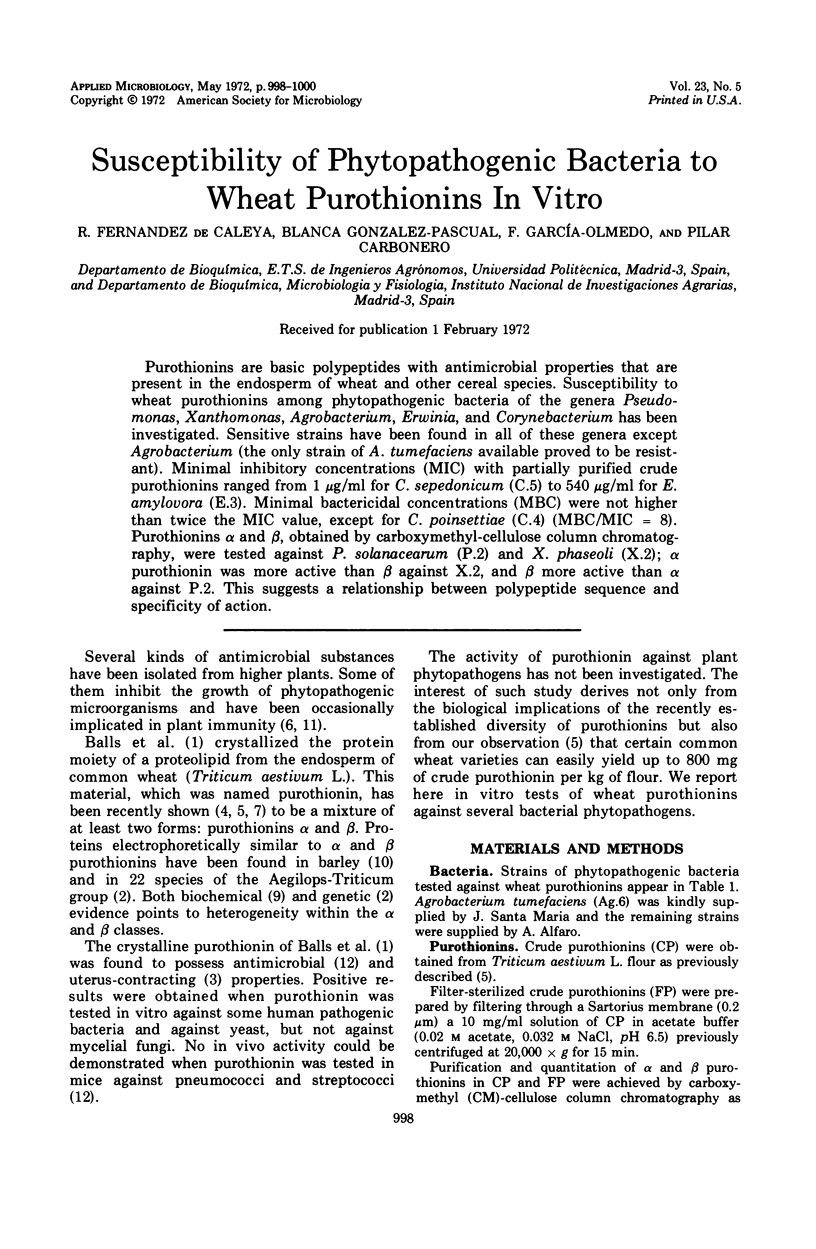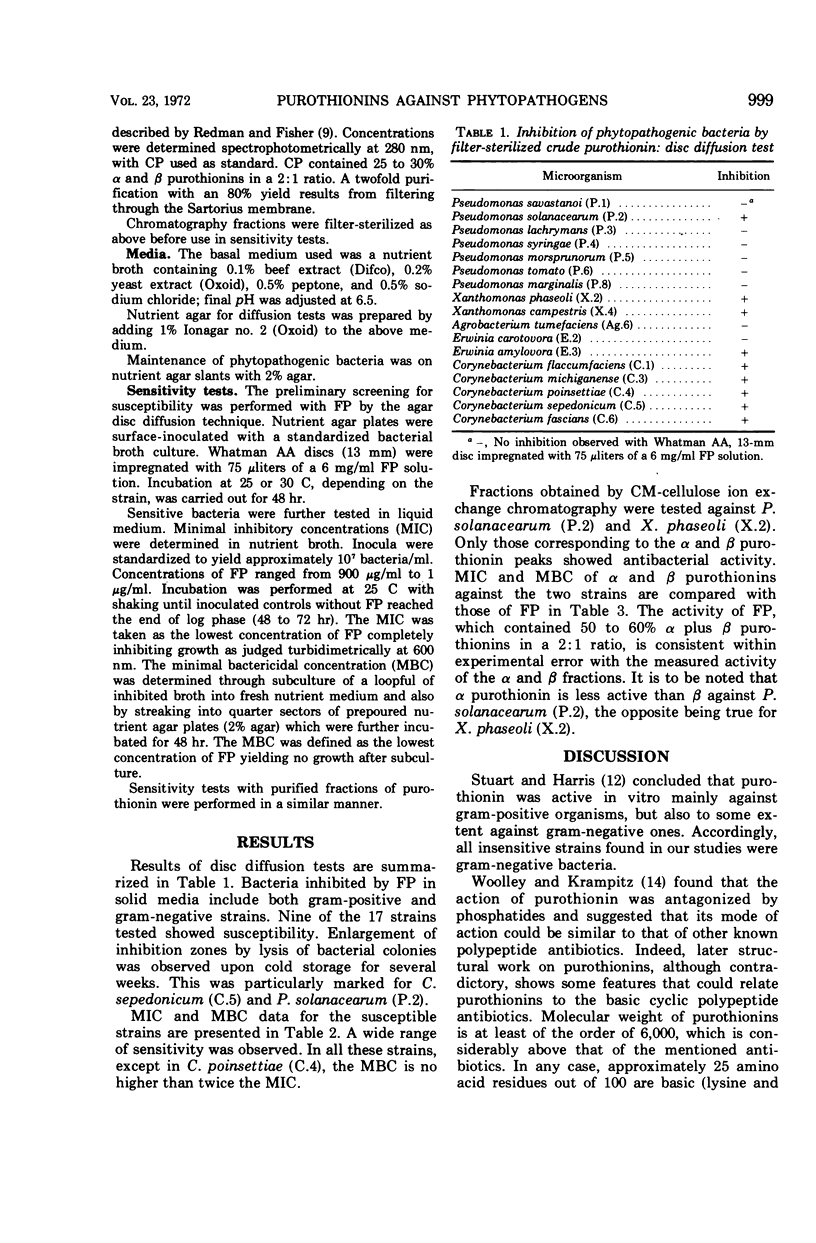Abstract
Purothionins are basic polypeptides with antimicrobial properties that are present in the endosperm of wheat and other cereal species. Susceptibility to wheat purothionins among phytopathogenic bacteria of the genera Pseudomonas, Xanthomonas, Agrobacterium, Erwinia, and Corynebacterium has been investigated. Sensitive strains have been found in all of these genera except Agrobacterium (the only strain of A. tumefaciens available proved to be resistant). Minimal inhibitory concentrations (MIC) with partially purified crude purothionins ranged from 1 μg/ml for C. sepedonicum (C.5) to 540 μg/ml for E. amylovora (E.3). Minimal bactericidal concentrations (MBC) were not higher than twice the MIC value, except for C. poinsettiae (C.4) (MBC/MIC = 8). Purothionins α and β, obtained by carboxymethyl-cellulose column chromatography, were tested against P. solanacearum (P.2) and X. phaseoli (X.2); α purothionin was more active than β against X.2, and β more active than α against P.2. This suggests a relationship between polypeptide sequence and specificity of action.
Full text
PDF


Selected References
These references are in PubMed. This may not be the complete list of references from this article.
- Carbonero P., García-Olmedo F. Purothionins in Aegilops-Triticum spp. Experientia. 1969 Oct 15;25(10):1110–1111. doi: 10.1007/BF01901464. [DOI] [PubMed] [Google Scholar]


